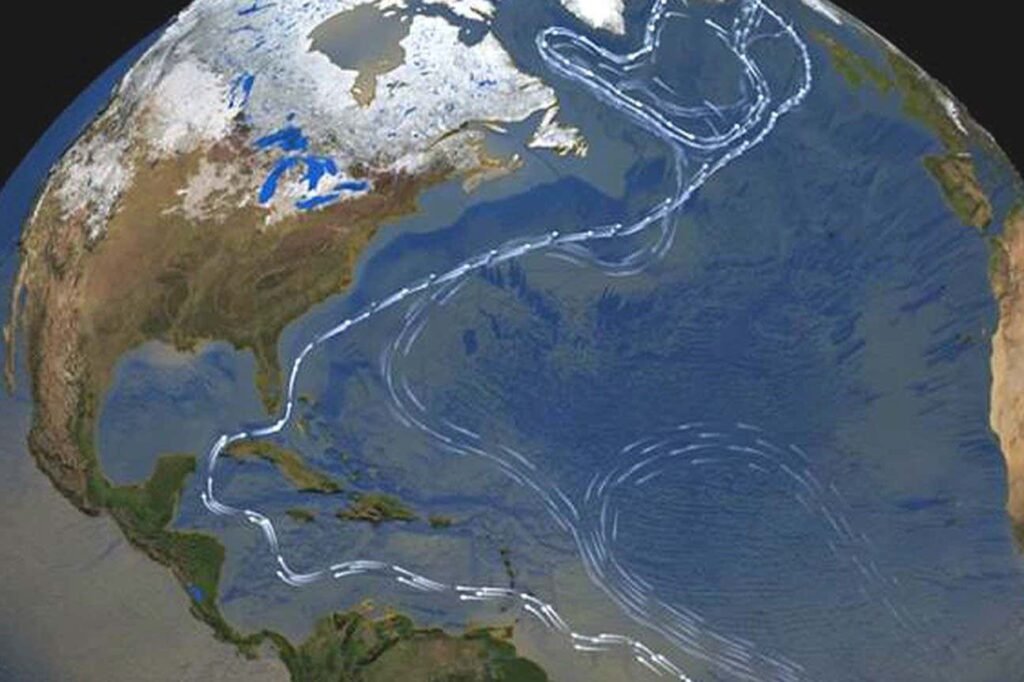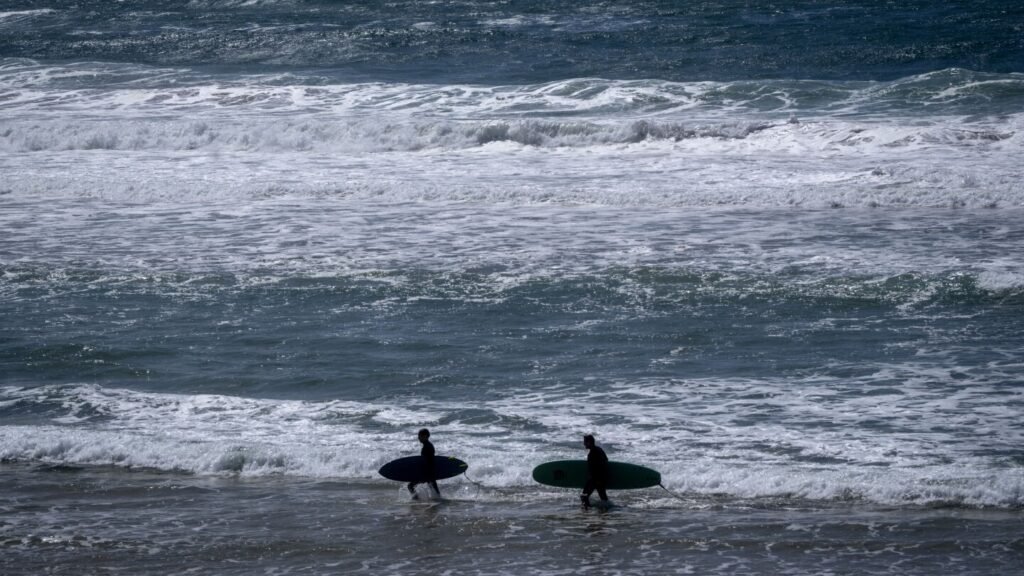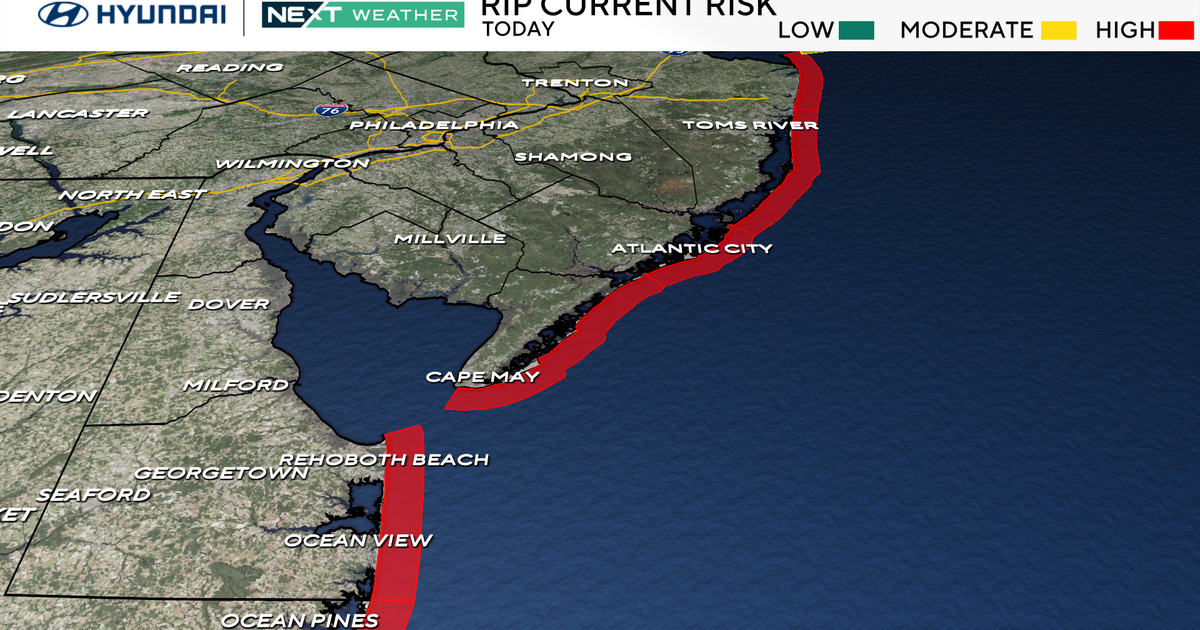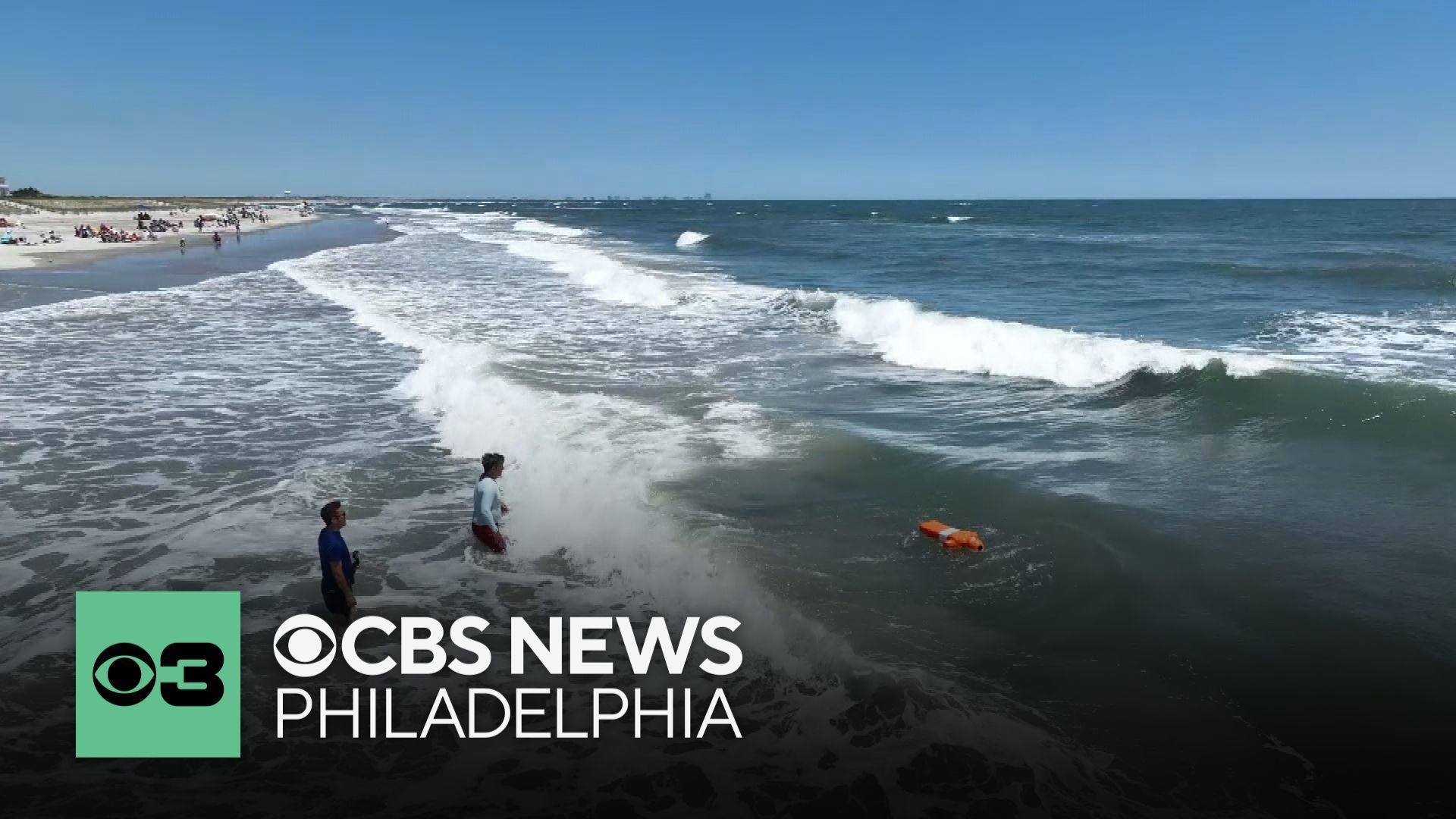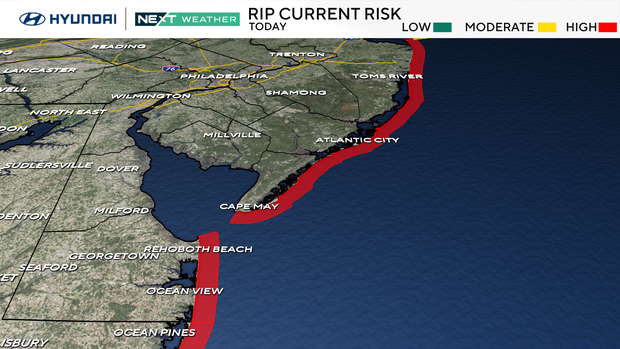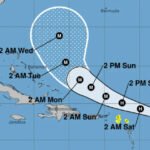Watch out for rip currents this weekend if you are getting in the water at the Jersey Shore or Delaware beaches. Even the best swimmers can be affected by dangerous rip currents.
The National Weather Service has issued coastal hazard alerts for these rip current risks through Saturday evening for the New Jersey beaches. Dangerous rip currents could still be present Sunday for the Delaware beaches.
Here are a few tips to keep you safe.
Planning ahead and avoiding risk
- Tell someone the specific beach you are going to.
- Make sure you choose a beach with lifeguards. Never swim at an unguarded beach.
- Follow the lifeguard’s instructions and look for flags that designate where the safe areas are for swimming, if any.
- Avoid the water until the rip current risk level is lowered.
- Too many rescues happen on days like these with high rip risk. Sadly, not everyone survives.
CBS News Philadelphia
Stay informed
- Stay ocean aware by checking: Tides, currents, water temperature, water conditions, weather conditions, and any beach dangers like rocks, pipes, jetties, piers, and sharp objects.
- Most importantly, know which beach you are on if you need to call 911 for help.
Get help
- If someone needs help in the water, get the lifeguard’s attention, and before you help anyone in the water, “Take 10”.
- That means take 10 seconds to call for help, gather your thoughts and make a plan before going into the water. Grab any floating device if one is available. If none are available, you can extend a towel to the person and tow them to safety.
- Going in with a plan is key. Too many times, a Good Samaritan rescuer without a plan winds up needing to be rescued themselves or drowning.
What to do if you are caught in a rip current
If you are caught in a rip current pulling you out to sea, or a cross current swiftly pulling you down the shore, this is what you need to do.
- Stay calm and call for help.
- Float on your back. Keep feet elevated.
- When ready, turn to your stomach and swim parallel to the shore for 25-100 yards. Most people struggle to swim this distance in choppy conditions.
- If exhausted, float again as needed.
- When free of the current, swim directly onto shore.
- For cross currents, follow the steps above, and when able, swim to the shore while still being pulled down shore.
- You may end up exiting the water hundreds of yards or more from your original spot on the beach



















